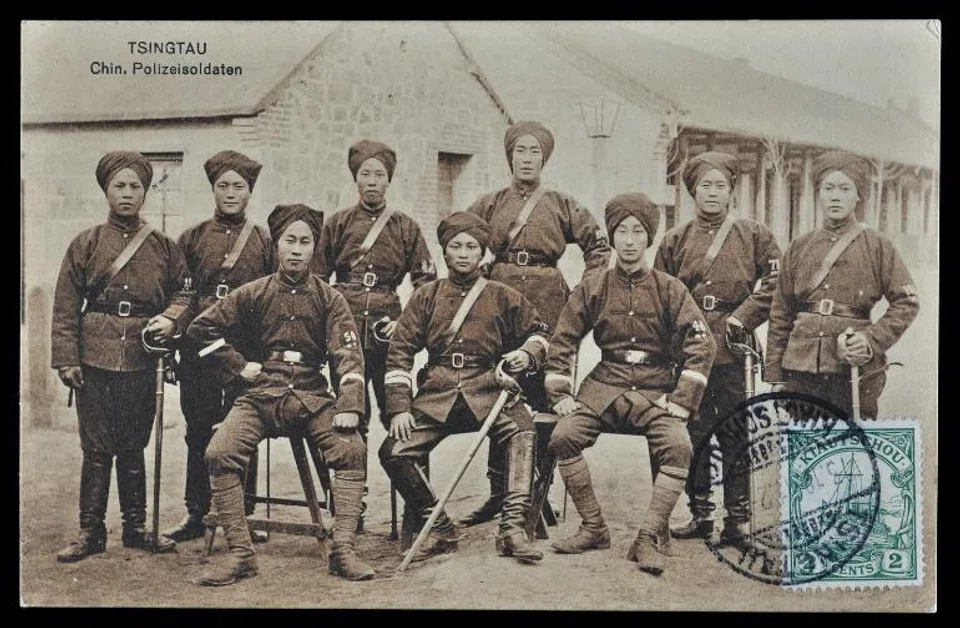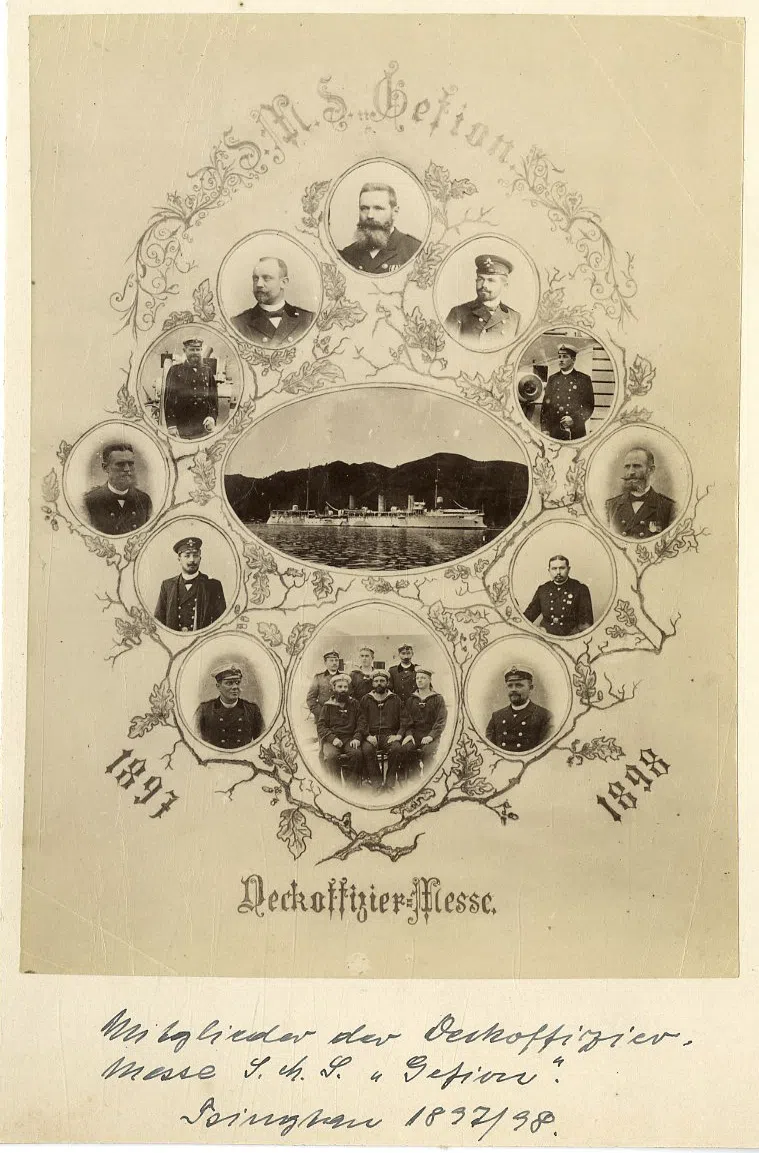Photo collector Zou Dehuai: An exhibition on Qingdao, my hometown
Photo collector Zou Dehuai takes us through an exhibition on Qingdao, providing a glimpse into the city’s early days and lives of people seen through photographs and personal items.

(All photos courtesy of Zou Dehuai)
“Qingdao is the healthiest and cleanest city in China. It has a nice outdoor bathing area and refreshing sea breeze in the summer, making it a favourite among tourists who enjoy swimming. As a coastal city, it has a beautiful future.”
This high praise for Qingdao is taken from the 1904 German-language guidebook Qingdao and its Surroundings (Führer durch Tsingtau und Umgebung) by Dr. Friedrich Behme, a German judge stationed in Qingdao. He was fascinated by the city and took over 600 photos of its urban landscape, earning him the title of “the first person to systematically record images of Qingdao”.
Unfortunately, these precious historical images of Qingdao did not make it back home, but were sold by Behme’s descendants to the German Historical Museum, depriving Qingdao residents of the opportunity to see what their city looked like in its early days.
Fortunately, many photographers from Germany at the time recorded images of Qingdao, and as time passed, more images emerged from the dust of history, allowing us to see the city’s original appearance today.

Born in 1990 in Xiaogang, Qingdao, I have devoted myself to collecting and researching historical images and artefacts related to East Asia’s modern history.
I currently have a collection of over 100,000 original old photos and hundreds of old albums. As a result of such a collection, I have had the opportunity to share these images and their stories at public lectures at Peking University, the Chinese University of Hong Kong and the UCCA Center for Contemporary Art, among others. Studying history through these images also became my passion, and I am a special member of the German-Chinese Friendship Association, a special researcher at the Social Archive of Chinese Photography under the China Academy of Art, and the Nanjing Massacre Historical Research Institute (南京大屠杀史学研究会). I also present my photos and findings on my internet account with over 2 million followers.

The exhibition “The Earliest Image Memory of Qingdao” showcases the city’s earliest image records through old postcards, photos, albums, photographic stickers, passports and war memorabilia. It is again a wonderful opportunity for me to share my old photos and their stories, especially when these are about my birthplace.




Part 1: old bookstores and vintage photographs (1897-1949)
The publishing industry in Qingdao has a long history, from the Ming and Qing dynasties’ traditional printing techniques, such as woodblock printing, copperplate engraving and lead type printing, to the modern offset printing technology.
There were German-owned, German language bookstores, the Qingdao Printing House (青岛印书局), and the Catholic Printing House (天主堂印书馆). Chengwen Hall (成文堂), which was first established in Jiao county, Shandong, during the reign of the Guangxu emperor in the Qing dynasty, had also set up a branch in Qingdao in 1913.
After 1915, Japanese-owned bookstores such as Bowen Hall (Hakubundo Shoten, 博文堂) and Wenying Hall (文英堂) emerged. There were also Chinese-owned bookstores such as Qingdao Bookstore (青岛书店), Huangdao Bookstore (荒岛书店) and Youlian Bookstore (友联书店), all of which are worth remembering.

My collection also includes modern Qingdao photographs, including those taken by German Adolf Haupt, as well as collections by Japanese bookstores Bowen Hall and Wenying Hall, and Koyo-Sha Co (光阳社). Most of these works were created during the period of German and Japanese occupation of Qingdao and are a record of the city’s early urban landscape, architecture and society.
My collection comprises over 500 old photos of Qingdao’s early days from 1897 to 1915. They came from 19 old photography studios, which made up almost all the earliest photography studio brands in Qingdao, including Rongzhang (荣彰), Hung Tai (鸿泰), Otto Aschbrenner, Tokubo and Kitsuka.
Part 2: light and shadow in the photography studio (1897-1930s)
The photography industry in Qingdao began after the German occupation. In the early days, there were studios such as the German-owned Stoloff Photography Studio, Japanese-owned Takahashi Photography Studio (高侨照相馆), and KH Wille Studio (辉利照相馆) founded by Hu Maowen (胡茂文) from Guangdong.
My collection comprises over 500 old photos of Qingdao’s early days from 1897 to 1915. They came from 19 old photography studios, which made up almost all the earliest photography studio brands in Qingdao, including Rongzhang (荣彰), Hung Tai (鸿泰), Otto Aschbrenner, Tokubo and Kitsuka. I am proud to say that I could probably be the collector and researcher with the most comprehensive collection of early Qingdao photography studio materials in China.



The photos focus on the portraits of merchants, soldiers, ordinary people and groups who came to Qingdao during that time, including valuable signed photos of prominent figures such as former Qingdao mayor Shen Honglie, Qingdao University president Gao Enhong, and Zhao Qi, head of Jiao’ao Commercial Bureau (胶澳商埠局) and editor of the Jiao’ao Chronicle (胶澳志).
They include hand-painted postcards sent by German military officers, a set of ten postcards showing the entire view of Qingdao, and several colourful postcards of the Qingdao Theater.
Part 3: nostalgic postcards (1897-1914)
During the German occupation of Qingdao, many German soldiers and merchants who missed their families and friends would send home postcards of local sceneries printed by the colonial authorities. For the exhibition, I selected over 200 old postcards from a collection of nearly 2,000 that were sent during the German occupation period.






Most of these postcards carry handwritten messages, and are valuable historical and cultural artifacts. They include hand-painted postcards sent by German military officers, a set of ten postcards showing the entire view of Qingdao, and several colourful postcards of the Qingdao Theater.
Part 4: historical relics as witnesses (1899-1945)
The photographs provide a glimpse into Qingdao’s history, and my collection is closely tied to the fate of modern Qingdao. The silver Longines pocket watch of Gottfried Landmann, the founder of Qingdao’s first brewery, accompanied its owner in the pioneering days of Qingdao’s beer industry. The barbed wire and shell casings used in the Qingdao-Japan war are gruesome relics of the only battlefield in the Far East during the First World War.



The personal belongings of German professor Margot Grzywacz, who accompanied her husband during his tenure as a foreign teacher at Shandong University, are a testament to the couple’s experiences. The confidential files kept by the first Japanese consul-general in Qingdao, including the “Records of the Qingdao Return”, witness the return of Qingdao’s sovereignty.
Meanwhile, the photos and documents of the Japanese military’s surrender ceremony, taken by a captain of the US Navy’s 6th Fleet, preserve the moment of Qingdao’s victory in the war of resistance.
Grzywacz taught in China from 1931 to 1941 and worked at Shandong University in Qingdao and Tsinghua University. Her personal items include various passports, over a hundred old photos, and other items from places such as Beijing and Guilin.
The writer Liang Shiqiu once worked with Grzywacz in Qingdao, and writer Zang Kejia was also her student at the time. Linguist Ji Xianlin and archaeologist Xia Nai both studied French under Grzywacz, and they both mentioned her in their diaries.
These preserved images and prints are witnesses to Qingdao’s history and culture, and also serve as a bridge for us to dialogue with the past.


The album with photographs and documents of the Japanese military’s surrender ceremony on 25 October 1945 at the Qingdao Racecourse (now Huiquan Square) and attended by China and the US, originally belonged to Captain Quentin Rust of the US Navy’s 6th Fleet, who participated in and photographed the ceremony.
These old photographs may have come from somewhere on an old street in old Qingdao. Their owners have come and gone, but now these items have been passed down through history and returned to their hometown, being discovered and seen again as irreplaceable memories of the era. These preserved images and prints are witnesses to Qingdao’s history and culture, and also serve as a bridge for us to dialogue with the past.




![[Big read] Paying for pleasure: Chinese women indulge in handsome male hosts](https://cassette.sphdigital.com.sg/image/thinkchina/c2cf352c4d2ed7e9531e3525a2bd965a52dc4e85ccc026bc16515baab02389ab)

![[Big read] Love is hard to find for millions of rural Chinese men](https://cassette.sphdigital.com.sg/image/thinkchina/16fb62fbcf055b710e38d7679f82264ad682ce8b45542008afeb14d369a94399)

![[Big read] How UOB’s Wee Ee Cheong masters the long game](https://cassette.sphdigital.com.sg/image/thinkchina/1da0b19a41e4358790304b9f3e83f9596de84096a490ca05b36f58134ae9e8f1)